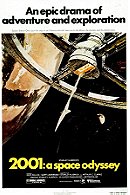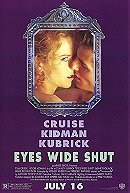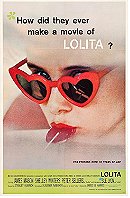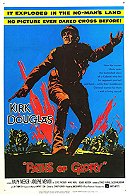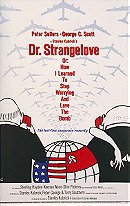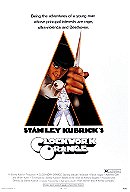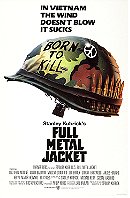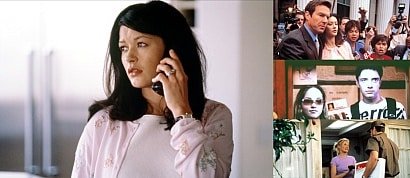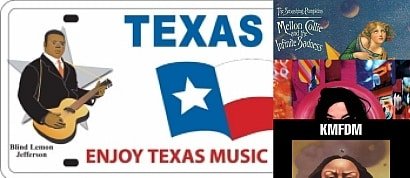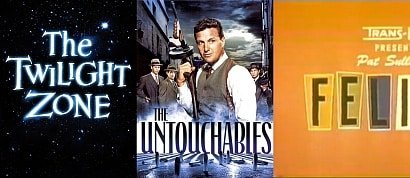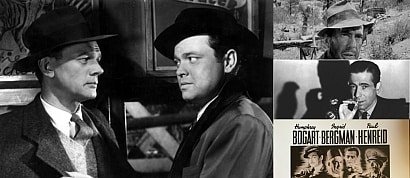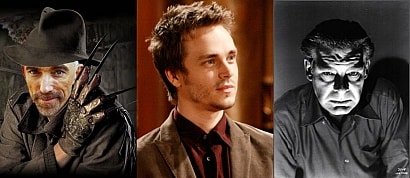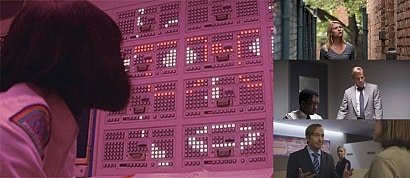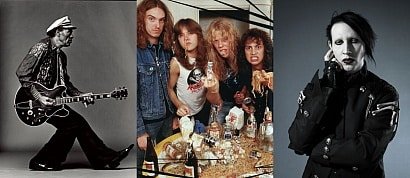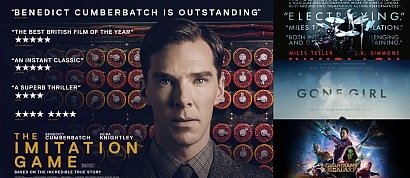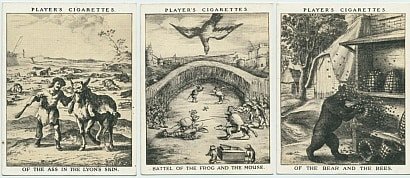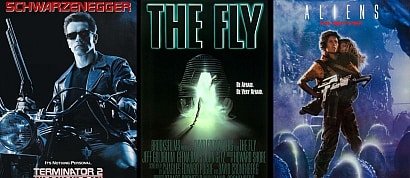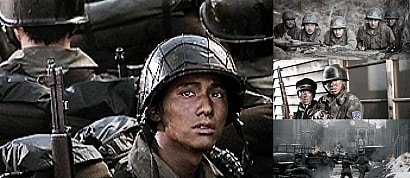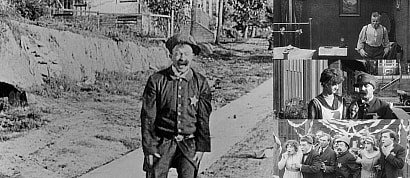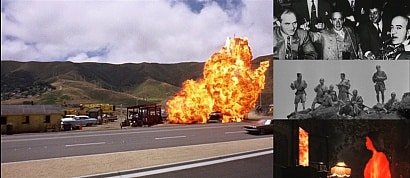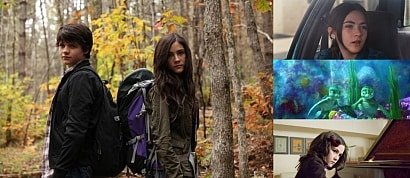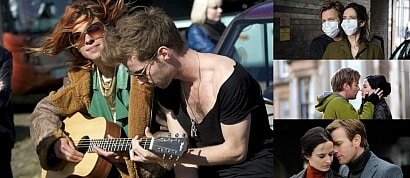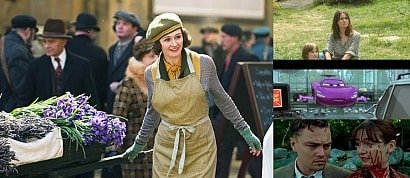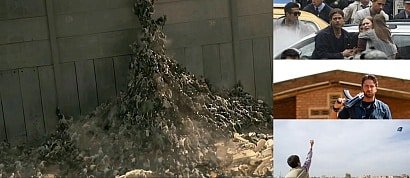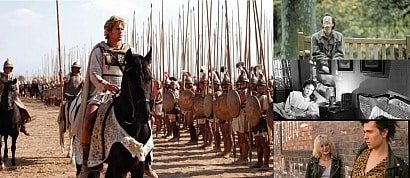Stanley Kubrick Stares
Sort by:
Showing 8 items
Decade:
Rating:
List Type:

Joe Turkel played Lloyd the Bartender who gives Jack Nicholson the drinks he wants, in exchange for his soul.Turkel’s stare just exudes evil behind those devil eyes and impish grin. This is just a classic Kubrick Stare – one of diabolical evil.
Jack Nicholson - Jack Torrance

Jack Nicholson’s performance as the haunted and mad husband and father, Jack Torrance, in The Shining, has grown so much on me over years of re-watching this great film, that I now think it is the best Kubrick Stare of all the (human) incarnations. I think what I like about Nicholson’s Kubrick Stare is how Nicholson slowly develops it through out the film. Nicholson plays Torrance as a pretty straight up, normal father and husband at the start of the film, and there isn’t a hint of the madness and The Stare until he gets to the Overlook Hotel.

Then we slowly see The Stare develop as Torrance descends further and further into madness. By the end of the film, as Torrance is axing his way into a room to kill his wife in the famous “Here’s Johnny!” scene, and then chasing his son Danny through the maze in a blizzard, we see Nicholson bring out the full Kubrick Stare in all its glory. Even in death, frozen solid as a block of ice, Nicholson gives us that classic Kubrick Stare.
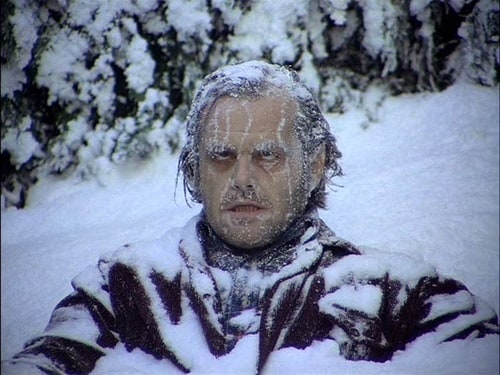
SFG¿mystic's rating:



2001: A Space Odyssey is a science fiction story. Set in three acts – two of which, the opening “Dawn of Man” sequence and the final “Jupiter and Beyond the Infinite” sequence, have not a single word of spoken dialogue. The middle third of the film shows mankind in the future as we travel into space, discover a buried mysterious black monolith on the moon, and journey with two astronauts, Dr David Bowman and Dr Frank Poole, aboard a spaceship to Jupiter. Kubrick shows that, by 2001 and the time of man venturing into space, he has become impersonal, robotic, with little emotion or feelings. It is left to the artificially intelligent computer that runs all operations on the spaceship (called H.A.L.) to be the one “human” on board the ship. H.A.L. is the only one on board, in fact in the entire film, that acts human. H.A.L. though non-human, has all the real human emotions Poole and Bowman lack. H.A.L. is envious, he is jealous, he is ambitious, and ultimately, he becomes paranoid and a killer. In other words, perfect for flashing the Kubrick Stare (more on that later).

H.A.L. discovers Poole and Bowman are plotting to disconnect him and decides he cannot allow that to happen. H.A.L. sends Poole out to fix a broken antennae, and kills him. Bowman goes out in a space pod to try to rescue Poole. H.A.L. then traps Bowman outside the spaceship, refusing to open the pod bay doors to let Bowman back in. Bowman, in his haste to rescue Poole, left the pod without his space helmet, and without it Bowman cannot re enter the spaceship. Or can he? H.A.L. miscalculates the ingenuity of humans, and Bowman boards the ship, anyway. It is here that Bowman finally shows emotion. As he makes his way, (helmet now on) towards H.A.L.’s logic system to shut off his brain and kill H.A.L., we see Bowman flash the Kubrick Stare – one of anger and killing emotion. Bowman slowly unplugs H.A.L. and we hear his artificial mind slipping away as he begs Bowman – “Stop. Won’t you stop Dave?”

Tom Cruise, playing the Manhattan doctor Bill Harford, has a really bad night in Eyes Wide Shut. Most viewers can’t make any sense out of this Kubrick film. The film is based on a novella “Traumnovelle” (Dream Story), written by Arthur Schnitzler. In the story, almost everything takes place in the main characters dream. In the film, Cruise has his dream after he fights with his wife (Nicole Kidman). And, like all dreams, things make no sense at all. Only in a dream could someone gain entrance to after hour places in Manhattan by simply flashing their New York Doctors License. And all of his efforts to culminate sex through the evening, whether with the prostitute, the Lolita figure played by Leelee Sobieski in the costume shop, or the orgy scene at the strange and secretive mansion, end in failure, just as they do in dreams. The Kubrick Stare Cruise gives us is that of a frustrated, lost and very horny man.
Lolita (1962)

Sue Lyon plays the nymphet Lolita for whom the film is named. This shot, taken after Lolita concludes that the once lovely Humbert is now a suffocating and overbearing bore, just shows that Kubrick could get a Stare out of a female actress as well as the male actors.
Paths of Glory (1957)

Kirk Douglass, as Colonel Dax in Paths of Glory, is a proud French soldier driven to the brink of madness by the insane waste of human life ordered by the French military command. He does his best to carry out his orders, but, like all those fighting on the front, he knows it is pointless and futile. The Kubrick Stare from Douglass is one of simmering fury – an emotion Douglas was fantastic at portraying, and Kubrick got the performance of a lifetime out of Douglas.

George C. Scott gives, perhaps, his greatest performance (besides his Oscar winning and worthy role as George Patton in Patton). Over the top cannot even begin to describe the performance Kubrick gets out of Scott, as General Buck Turgidson. Kubrick, always known for making his actors do take after take until he got just the right performance and look he was seeking, had Scott ham it up, making outlandish and cartoon-like faces and gestures. Kubrick told Scott these were simply “warm up” performances and these would not be used as the final takes in the finished film,. When Scott saw the finished film and found Kubrick had lied to him and used those very same over the top performances, Scott vowed never to work with him again. But Kubrick’s deception worked. Scott plays Turgidson as a almost child-like total maniac who 100% believes the United States should go ahead and start a nuclear war with Russia, and that “losing 10-20 million dead, tops, give or take the breaks” was acceptable casualties. Turgidson’s character is loosely based on real life US Air Force General Curtis LeMay. But when President Merkin Muffley (one of three main characters in the film played by Peter Sellers) thwarts Turgidson’s wishes to start the nuclear war, we see Scott flash the Kubrick Stare.

The great actor Sterling Hayden had not performed in a film in many years before Kubrick brought him back to play mad Brigadier General Jack Ripper, commander of a military base who orders his nuclear bombers to attack Russia on his own command. Ripper takes advantage of a little known piece of legislation delegating authority to launch a nuclear counter attack against the Russians, if the President and the top government leaders are all killed by a Russian first strike. Once he has issued the order to attack, the planes cannot be returned unless the signal is preceded by a special three-letter code prefix known only to Ripper. Ripper’s Exchange Officer with the British Royal Air Force (also played by Sellers) is Group Captain Lionel Mandrake, who confronts Ripper with the madness of his actions and begs Ripper to give him the code so he can bring the planes back before they initiate World War III. The Kubrick Stare given to us by Hayden is a classic insane madman look mixed with anger and a touch of good old American condescension towards Mandrake

As though an exchange of nuclear weapons by the two great super powers wasn’t bad enough, the Russians have a secret, ultimate weapon – the Doomsday Bomb. The Doomsday Bomb is set to go off if the Russian homeland is attacked, and it will deliver a “Doomsday Shroud” of atomic radiation that will encircle the Earth and kill all life. As Major Kong and his crew near their target, it dawns on the assembled US military officials, Russian Ambassador and the President, that the world is about to end. Is there no hope at last for mankind? Wait! Out of the darkness comes Peter Sellers again, this time playing the crazed, wheelchair bound ex-Nazi scientist, Dr. Strangelove. Strangelove calculates that it is feasible that mankind could survive the radiation for years, in some of the deepest mine shafts. As he consults and advises the President on his mad plans, his own arm and gloved hand attempts to strangle himself. The Kubrick Stare delivered by Sellers is that of pure scientific madness. The madness of men who created such horrible weapons and believed they could somehow control them.
A Clockwork Orange (1971)

The image of Malcolm McDowell playing the leader of a gang (called Droogs) of teenage thugs who go on rampages of “ultra violence” around England, wearing his tilted Bowler hat, with eye make up, staring up and at the camera with head tilted and an evil, sinister, mad look on his face – is the quintessential Kubrick Stare. McDowell, more than any other actor in Kubrick’s films, perfected the Stare and used it to great effect throughout the film. A Clockwork Orange is a bleak, dark, depressing look at the near future and what “civilized western society” could devolve into. Alex DeLarge is the ultimate expression of the descent of man into mindless lust for violence and sex; a sociopath without a hint of a conscience. Though he respected Kubrick as an artist and director, McDowell could never call Kubrick a great film director, because all of his films were, in McDowell’s opinion, cold and inhuman. McDowell felt they didn’t show the good side of man, only ever the evil, and that that was a fatal flaw in Kubrick’s storytelling style. Nonetheless, McDowell (along with Sellers in Dr. Strangelove and Ermy in Full Metal Jacket) holds the distinction of being one of the very few actors the ever-controlling Kubrick allowed to improvise lines of dialogue and scenes. In fact, the famous scene where Alex mercilessly kicks the old man as he is pinned to the floor by another Droog, whilst performing “Singing in the Rain”, was improvised by McDowell.
SFG¿mystic's rating:



Kubrick found the young actors who played his Marine recruits sent off first to boot camp, then to war, by issuing an open casting call in the US and Canada. Kubrick received thousands of videotaped auditions, which were whittled down to about 800 that he personally watched. Out of these, he selected young actors such as Matthew Modine, who would play “Private Joker”, Adam Baldwin who would play “Animal Mother”, and D’Onofrio, who would play the unforgettable character of Private Pyle.
Actor R. Lee Ermey played Gunnery Sergeant Hartman, the drill instructor who terrorizes the recruits through boot camp and becomes Private Pyle’s personal hell. Ermey was originally a technical advisor to Kubrick on the film, but asked Kubrick if he could portray Hartman, instead. Kubrick originally turned him down, so Ermey put together his own casting videotape. He had himself filmed tossing an uninterrupted string of expletives and insults at British Royal Marines, while off-camera he had people throwing tennis balls and oranges at him. Ermey never flinched as he was pelted, and stayed in character for 15 straight minutes of classic R. Lee Ermey insults (Ermey is best known today for his appearance as the none-too-compassionate therapist who tosses a box of tissues at a wimpy patient in the Geico commercial). Kubrick saw the tape and changed his mind, admitting that Ermey’s genius was central to the character and the film.
Throughout boot camp, Private Pyle is outmatched and in way over his head, both physically and emotionally. Hartman despises him and torments him relentlessly. No one but Private Joker shows him any compassion. The only thing Pyle finds he is good at, in fact he excels at it – is shooting. He is an excellent marksman, the best in the unit. But it isn’t enough. On their last night in boot camp, Joker pulls night watch and finds Pyle alone in his underwear, sitting in the latrine, holding a rifle. He tries to reason with Pyle to put the gun down before Hartman finds out and they will both be, as Joker puts it – “in a world of shit”. But Pyle is beyond caring now. He flashes one of the best and well known of the Kubrick Stares and says “I am in a world of shit”. Hartman wakes up, hears the commotion, and goes to the latrine to confront Pyle. After one final insult about his mother not loving him enough, Pyle pulls the trigger and kills Hartman. He then puts the gun to his own head and kills himself, sparing Joker.
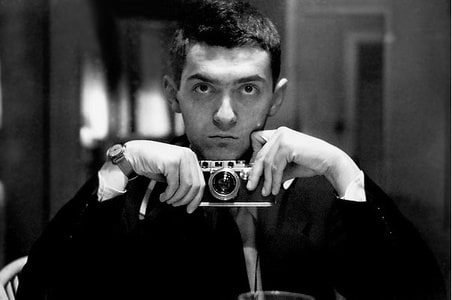
One of the Stanley Kubrick's visual trademark is the 'Kubrick Stare' when the
characters often briefly glances at the camera directly, and effectively at the
audience.
The Kubrick Stare, sometimes referred to as the Kubrick Glare, is a common camera shot of an actor in most of Stanley Kubrick’s films. The Kubrick Glare has been called the “heavy-browed look of insanity”. Roger Ebert said he simply thought Kubrick found it an interesting angle with which to shoot the human face. Regardless, the actor is filmed by Kubrick at a specific angle with their head tilted slightly down, looking up, sometimes with the teeth exposed but always with a detached, menacing, angry, diabolical, evil or mad look in their eye. See if you recognize these, the Top Ten Kubrick Stares.
It often occurs whenever the characters/Kubrick are upset or having an
emotional reaction. This technique is effective in terms of adding an intense
atmosphere, thus creating an air of suspense and pulling us into the situation that the characters are in.
Added to
People who voted for this also voted for
Fashion in 2000 Films
Best albums of 1995
Top 15 episodes of 2013
My favourite TV Shows -Series-
Michael Caine's Five Favorite Films
Underatted Actors
Mental Health
TV Shows - Watched in 2019
Drugs' Favorite Music Lists
Cinema: Best of 2014
Cigarette Cards: Fables of Aesop (1927)
HV Presents: 50 Best Movie Tag-Lines!
Top Korean War Movies
Chester Conklin - Faces of Charlie Chaplin
Cinema Diary - Vol 4 E6 - The Gap
The Evolution of Isabelle Fuhrman
The evolution of Carice van Houten
David Mackenzie Filmography
The Evolution of Cécile De France
The Evolution of Emily Mortimer
Marc Forster Filmography
History, Literature and Cinema
 Login
Login
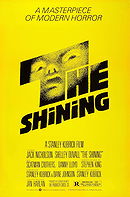
 6529
6529
 8.2
8.2
 8.4
8.4
